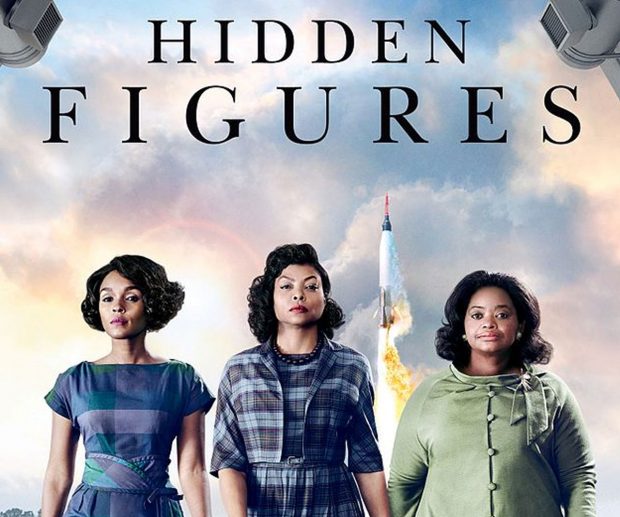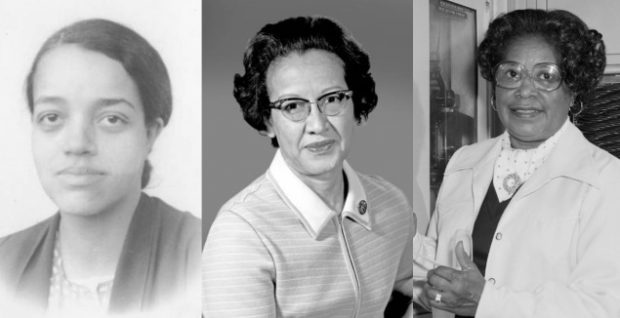Hidden Figures
They say that behind every great man is a great woman. Such was the case with the astronauts at NASA. In this story however, the women behind the men were African-American mathematicians who unfortunately have been largely left out of the American history books.
Thanks to the acclaimed award winning film Hidden Figures — based on the book by Margot Lee Shetterly — Katherine Johnson, Mary Jackson and Dorothy Vaughan are finally getting the due recognition they deserve.
These three women worked largely behind the scenes at NASA in the segregated West Area Computers division of Langley Research Center. Their knack for math and precise calculations helped the United States catch up in the “space race” and sent astronaut John Glenn, who recently passed away at the age of 95, into orbit around Earth.
Empire‘s Taraji P. Henson plays Katherine Johnson, a brilliant mathematician who began working at NASA in its earliest days, beginning in the 1950s. Her mind was so trusted, in fact, that NASA says Glenn called for Johnson to check the complex trajectory calculations made by the computer before launching the Friendship 7 in 1962. Rumor has it he refused to go into orbit until she had done so. “Get the girl, check the numbers,” Glenn said, referring to Johnson. “If she says they’re good, I’m good to go.”The girl from West Virginia, born in 1918, admitted she always had an obsessive fascination with numbers. “I counted everything,” she told NASA in 2015. “I counted the steps to the road, the steps up to church, the number of dishes and silverware I washed … anything that could be counted, I did.”
While many of her classmates were unable to complete their educations in order to help their families, Johnson sped through school thanks to her incredible smarts. She was ready to enter high school by the age of 10, and her father Joshua moved the family in order to make sure his daughter met her full potential.
Johnson graduated from West Virginia State College at 18 and began working as a teacher, later spending time as a stay-at-home mom. In 1953, she found work at NASA’s predecessor, the National Advisory Committee for Aeronautics, which had begun hiring African-American woman during World War II. The agency was so impressed by the women’s skill, it continued to do so after the war.
Eventually, Johnson was able to put her incredible mind to work for NASA in Langley Research Center’s Guidance and Navigation Department. She went on to work on the Redstone, Mercury and Apollo space programs, calculating the trajectory for Alan Shepard, the first American in space, and Glenn’s historic orbit. She continued to work at NASA until 1986 and was awarded the Presidential Medal of Freedom from President Barack Obama in 2015. Despite her many accomplishments, Johnson, who turned 98 this past summer, always remained humble. “We always worked as a team,” she said in a 2010 interview. “It’s never just one person.”
Dorothy Vaughan, portrayed by Oscar winner Octavia Spencer in the film, paved the way for minorities, including Johnson, by becoming NASA’s first African-American manager.
Born in 1910 in Kansas City, Missouri, Vaughan excelled in school and graduated from Wilberforce University in Ohio in 1926. According to NASA, the talented mathematician left her position as a teacher during World War II to work at Langley, in what she believed would be a temporary position. However, she stayed on after the war and was asked to helm the West Area Computing Unit after Jim Crow laws required segregation of the African-American women from their white counterparts.
Vaughan headed the division from 1949 until 1958. She continued to use her incredible skills in an integrated computer division and became an expert programmer, contributing to the Scout Launch Vehicle Program before retiring in 1971. She died in 2008.
Mary Jackson, NASA’s first black female engineer, is played by a barely recognizable Janelle Monáe in her first major big-screen acting role.
The real Jackson, born in Virginia in 1921, was another extraordinary scientist who worked closely with Johnson and Vaughan. Like them, she joined Langley after working as a teacher. In the 1950s, she experimented with processing data from wind tunnel and flights. Eventually, she joined a training program that would allow her to earn a promotion from mathematician to engineer, which required taking classes at the University of Virginia in addition to her work. In 1958, she became NASA’s first black female engineer.
After 34 years, Jackson took a job in NASA’s Equal Opportunity office, making changes to benefit female workers until her retirement in 1985. She died in 2005.
In a recent interview, the actresses portraying these brilliant woman admitted they didn’t even know the true story, but once they learned of the heroes, they were determined to make them known to everyone.
“I didn’t know the story until I got the script,” Henson said. “And I went to a historically black university, where Ron McNair – who died in the Space Shuttle launch to space had attended. I actually studied electrical engineering. I failed, but I was there. And this man has a building named after him. If it wasn’t for Katherine Johnson, there would have been no Ron. But hey, who am I? Unfortunately, I’d never heard of her. I was annoyed. I was mad. And this became my passion project. I was like, ‘I have to do this movie.’ ”
“I think there will be some people who think that this is some sort of conjecture,” Spencer added. “I thought it was fiction. But it’s an embarrassment that these women were omitted from the annals of history. I’m excited because the world will finally know these names. They will no longer be obscure.”
Hidden Figures is a movie that men, women, and children alike can thoroughly enjoy while getting an education in one of history’s most overlooked chapters. We know there are countless other stories out there such as this. It’s too bad we must depend upon Hollywood to tell them, otherwise we probably would never hear of them.
QOTS Magazine








